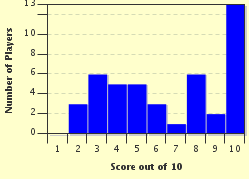Quiz Answer Key and Fun Facts
1. The first Swiss canton in this quiz is actually the newest one, having been created in 1979. It is named after the mountain range that runs through it and the neighboring cantons. It borders France and is in the northwestern part of Switzerland. Which canton is this?
2. This canton is the most "Italian" of Switzerland's cantons. Like Italy, this canton has a thriving wine industry. Lake Maggiore (pictured), south Switzerland's largest lake, can be found along the Italian border. The largest city in the canton is Lugano, which is a popular destination on Lake Lugano. Which canton is this?
3. This next canton is very alpine in terrain. It is a very big tourist destination because the Matterhorn is located here. As a result, this canton has many popular ski resort cities like Zermatt and Crans-Montana. Which snowy canton is this?
4. Although this canton is dominated by the city of the same name, it also includes other small towns and cities. It is the most populous canton in the nation. Some of the famous sites there are Fraumunster Church (pictured), Grossmunster Cathedral and Uetilberg. Which canton is this?
5. This canton is big on fishing. In fact, its name loosely translates to "to pull up fish nets". There are two big lakes in this canton: Zugersee and Agerisee. Despite the canton's small size, it has a diverse landscape that includes flatland, hills, mountains, rivers and lakes. Which canton is this?
6. This canton should not be confused with the similarly named cheese. Speaking of cheese, however, this canton is home to a thriving Swiss wine region along the lake of the same name. This canton is also very mountainous as well. The capital city (which also has the same name as the canton) is full of old buildings in its old town, especially along the Rue du Pommier. Which French-speaking canton is this?
7. This canton has two different spellings: one for French and one for German. It is located on the Swiss Plateau and in the Bernese Alps. Vanil Noir is the canton's highest peak. This canton is also known for its many museums like the Gutenberg Museum and the Bible and Orient Museum. Which canton is this?
8. This canton is the flattest in Switzerland, which is a very mountainous country. It is well known for its hot springs, both sulfur and saline. Other famous sites are the Konigsfelden Monastery (pictured), home to the most valuable stained glass windows in the nation, and Habsburg Castle, the original home of the Habsburg Dynasty. Which canton is this?
9. This canton borders two countries, Austria and Liechtenstein. About half of the canton is flat and full of rivers like the Rhine while the other half is alpine. The capital city is well known for its large abbey of the same name that was built in 719. Another popular site is the Stadtlounge, which is basically a formal lounge in the middle of the street. Which canton is this?
10. One of this canton's hallmark places is the thrust fault line named after it, which also runs through St. Gallen and Graubunden. The most famous of this canton's many mountains is Todi (pictured), at 11,857 ft (3,614 m) tall. Tschingelhorner, a mountain range that looks like sharp teeth, can also be found here. Which mountainous canton is this?
Source: Author
Joepetz
This quiz was reviewed by FunTrivia editor
agony before going online.
Any errors found in FunTrivia content are routinely corrected through our feedback system.

